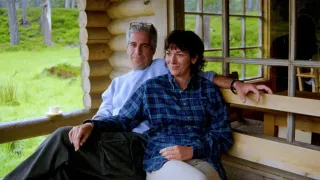Jan 10
Actor Grant Evan Explores Race, Class & Drag in 'Ain't No More'
Kilian Melloy READ TIME: 8 MIN.
Jordan E. Cooper's play "Ain't No Mo'" is a ferocious take on the absurdities of American politics – especially around race, but also with regard to abortion, LGTBQ+ equality, reality television, religion, and other hot-button topics.
A co-production of the play between Front Porch Arts Collective and SpeakEasy Stage Company, directed by Dawn Simmons, is set to run at the Boston Center for the Arts from Jan. 10 – Feb. 8. (Follow this link for tickets and more information.)
Positing that every Black person in America is expected to accept a one-way ticket to fly to Africa or else face a physical transformation into a white person, the play lets loose with volley after volley of freewheeling imagination that riff hilariously and irreverently on just about every sensitive aspect of American culture, and feels simultaneously over the top and a little too close to the truth. The play's structure is that of a sketch show, with different chapters taking place in various settings and distinct casts of characters. Divided into nine segments – with titles like "The Book of Revelation," "Circle of Life," "Real Baby Mamas of the South-Side," and "Green" – the work comes crashing in like successive waves at the seashore. Taking the metaphor further, the gathering storm on the horizon is one in which a mandated conformity promises exile, deprivation of bodily autonomy, and worse.
The one character to cross sketches is Peaches, a drag queen played by non-binary actor Grant Evans (they/them). A New York City-based actor, Evans was last in Boston to work with SpeakEasy Stage on "A Strange Loop," and they've also starred in off-Broadway productions of "Little Shop of Horrors," "Lilies: Or, the Revival of a Romantic Drama," and Stephen Schwartz's "The Baker's Wife," with Schwartz himself selecting Evans for the cast... but of that, more later.
EDGE caught up with Grant Evans for a funny and revealing discussion of the play's themes, how they interpret Peaches, and what it means to belong to a marginalized group in current America.






